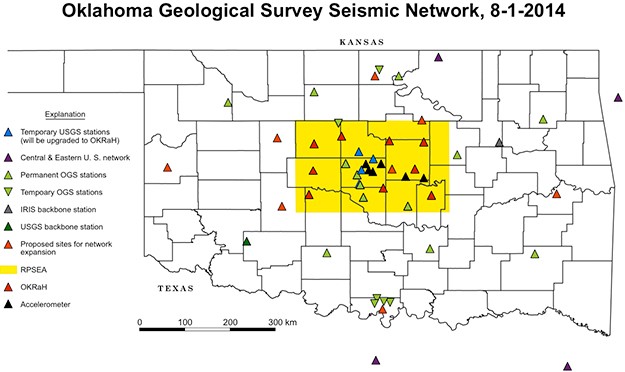For this project, 12 temporary seismic stations will be operated in central Oklahoma, within the existing seismic monitoring network operated by the OGS. Each station consists of a sensitive seismometer, recording device, batteries and solar panels. Some of these stations will feed immediately into the OGS seismic monitoring system but most will record data locally.The data will then be retrieved regularly and incorporated into routine earthquake analysis within Oklahoma as well as support specific research efforts. The data is also archived at the IRIS (www.iris.edu) data management center and made available to other researchers.
The recordings from these instruments and the Oklahoma Seismic Network will be used to improve our understanding of active faults, subsurface rocks and their properties, ground motion observed on the surface within and near Oklahoma, and potential changes that may be causing some of the earthquakes within Oklahoma.


